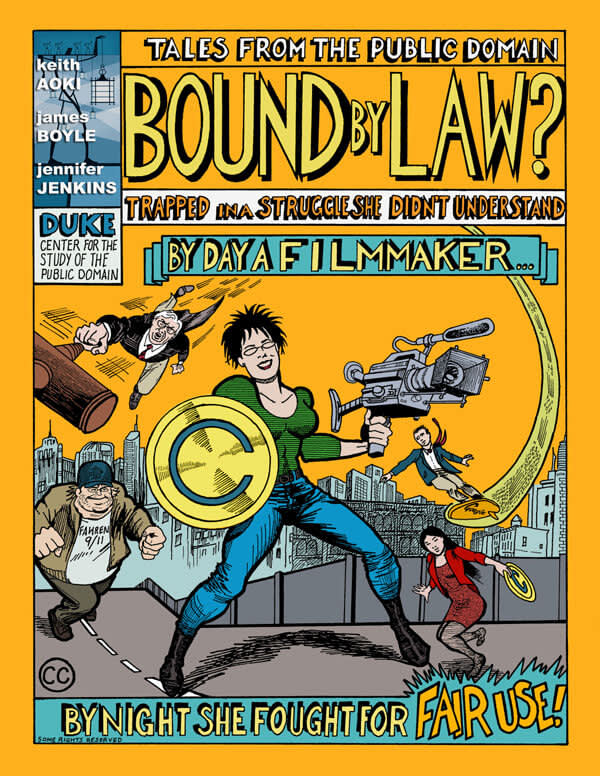If you work with photos in any capacity, it’s important to have a basic understanding of how copyright works. Copyright laws vary from country to country, but they’re all designed to protect the rights of those who create original works (like pictures). Let’s take a high-level look at what copyright is and how to register your photos. For a deeper dive into copyright law, check out the resource list at the end of this article.
What is copyright?
The idea behind copyright is pretty simple: If something is copyrighted, it means that the creator of the work has been granted legal rights to it from a certain country. Many countries agree on copyright laws—160 of them are part of the Berne Convention for the Protection of Literary and Artistic Works, and recognize copyrights held by citizens in each participating country.
The person who holds the rights to a work reserves them for a specific amount of time, and the copyright can be renewed. Copyright owners also have some control over where their works are posted online, sold, and how they’re modified. If you make a living creating images, talk to a lawyer and/or join a professional group like the American Society of Media Photographers in order to get a solid understanding of how copyright laws apply to you and your work.

Want to register your photos?
Registering your photos is surprisingly simple. The following instructions briefly outline the process in the United States, and it’s pretty similar in most other countries.
Step 1: Go to the United States Copyright Office. No need to hop in your car—the registration process can be completed online. Be sure to disable your browser’s pop-up blocker before you begin.
Step 2: If you’re a first-time visitor to the site, click the link that says“If you are a new user, click here” and set up an account. If this isn’t your first visit, log in with your credentials.
Step 3: Create a new case. It typically takes about 10-15 minutes to complete the form. Here’s an overview of what you’ll need to do:
Type of Work: Choose the “Work of Visual Art” option and enter a title for your photo.
Publication/Completion: You can likely choose “no,” unless your photo has been published in a book, newspaper, or other print work.
Authors: Click Add me.
Claimants: Click Add me.
Limitation of Claim: Read this section and then click Continue.
Rights & Permissions: Click Add me.
Correspondent: Click Add me.
Mail Certificate: Click Add me.
Special Handling: You can most likely skip this section, unless you need expedited processing and one of the Copyright Office’s three “compelling reasons” applies. To learn more about that, check out the office’s document about special handling requests.
Review Submission: Make sure everything is correct before you go forward. You can be fined for misrepresenting information on a copyright form, so take your time with this step and ensure that everything looks right.
Step 4: Now it’s time to pay for your registration. The current fee is $35, but may differ if you’re registering a work by multiple authors, a folder of work, need special handling, etc. You can pay with a credit or debit card, through an electronic funds transfer, or with a Copyright Office Deposit Account.
Step 5: Add your work. The Copyright Office provides a list of acceptable file types and prefers that uploaded images be smaller than 600 x 600 pixels (tip: you can easily resize your photos with PicMonkey). If you’re attaching a zip file, make sure it’s smaller than 400MB and attach multiple files if needed.
Step 6: Celebrate—you’re done! It’s important to note that your work isn’t officially registered yet, although your claim has been submitted. You can expect an email confirming receipt of your payment and application, and log back into your account to check on the status of your application. Once it’s accepted, you’ll receive an official registration certificate in the mail.
Want to know more?

The whole copyright thing can seem a little overwhelming, but if you remember that the laws are designed to protect the people who wrote the book, took the picture, or composed the song, it makes a lot of sense. Here are a few other resources to check out if you want to learn more about copyright laws:
Tales from the Public Domain: Bound by Law? A free comic book from Duke University that tackles copyright in an interesting and straightforward way.
Copyright Alliance. The Copyright Alliance is a nonprofit organization that offers free educational materials and a podcast about copyright. While it can get a little deep in places, most of it is easy for copyright newbies to understand.
The United States Copyright Office. This government body offers some useful information in their publications “Copyright Basics” and “Works Made For Hire.”
